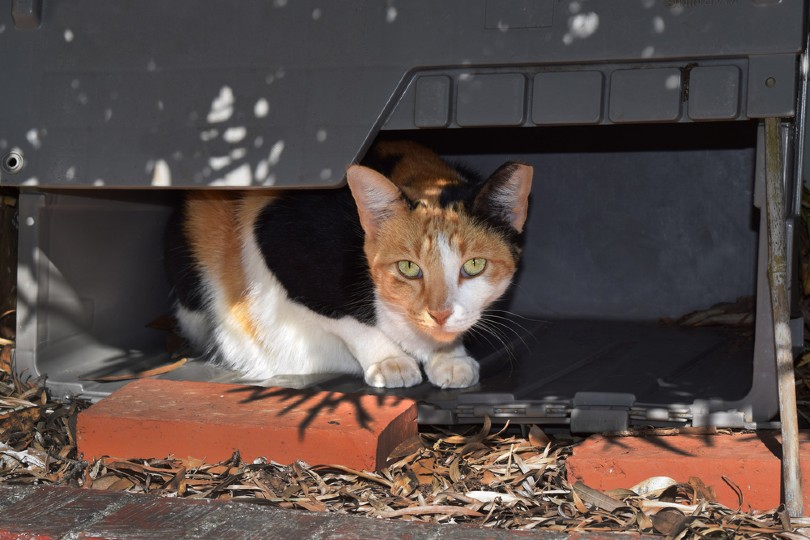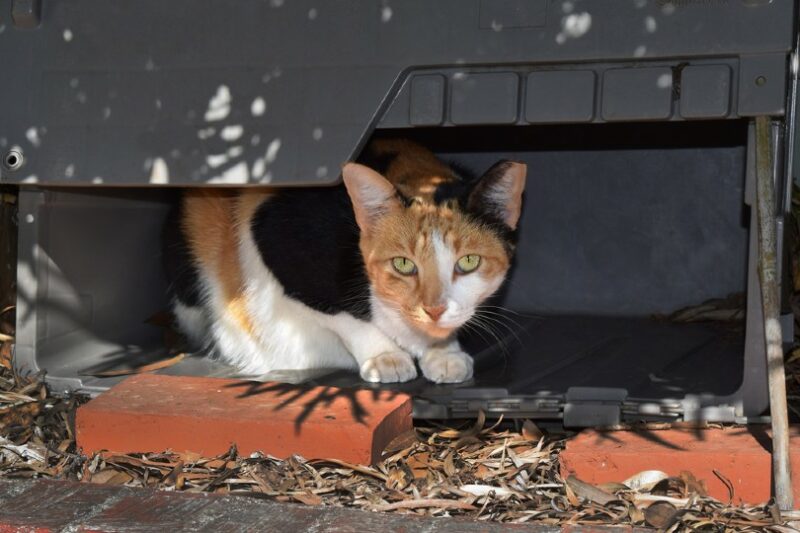So, you’ve found a feral cat, and you’ve decided to adopt and tame them to make them a part of your family. First of all, make absolutely certain that the cat is feral and isn’t actually someone’s pet that ran away or got lost. If you’re sure the cat doesn’t have an owner, there’s no reason why you shouldn’t adopt it.
However, don’t capture the feral cat and force them to live with you and expect that you’ll get along. Instead, follow the five steps below to help you tame them and make friends. Then, you can invite them inside and provide a comfortable space in your home.

The Three Classifications of Cats
When you speak to experts in the animal rescue community, they’ll generally classify stray felines into the following three categories.

Socialized
Socialized cats are domesticated. They’re comfortable with humans and don’t retreat from contact. They have probably gotten lost or run away.
Feral
Feral cats have had little to no human contact throughout their life and they’re unlikely to trust humans. They are essentially wild animals, and you shouldn’t attempt to tame them.
Semi-Feral
Semi-feral cats fall between socialized and feral cats. They are usually averse to human touch, but they may not be scared of human interaction. They can make eye contact and might be vocal with you. These cats are generally able to be tamed with the proper attention, effort, and care.
How to Tame a Semi-Feral Cat

As we’ve established, semi-feral cats are the only strays that you might want to tame. Feral cats are wild animals and don’t make good candidates for taming. Socialized cats are already domesticated and are most likely someone’s missing pet. Assuming the cat you want to tame is semi-feral and not a lost cause, the following five steps will help you tame them and bring them into your home.
- Related reading: How Do Outdoor Cats Survive Cold Winters?
The 5 Steps to Tame a Feral Cat
1. Let the Cat Initiate Contact
When attempting to deal with a semi-feral cat, you’re best off leaving them alone. It might seem counterintuitive to ignore a cat that you want to take home, but if you don’t provide attention, they’re more likely to be interested in you.
In that case, they will initiate contact by reaching out or possibly being vocal toward you, indicating that you can continue the interaction.
2. Build Rapport With The Cat
Once the interaction between you and the cat has begun, you want to ensure your presence is enriching and non-threatening for the cat. The idea is to make sure the cat enjoys your interaction so they want more.
You can try offering food since rescuers of cats say that mealtimes are the best times to initiate interactions and build rapport. You can also provide the cat with toys or treats, which will make them more likely to interact with you individually.

3. Desensitize The Cat To Human Contact
There’s a lot about human contact that’s scary to a cat, not just being touched. The sound of other people talking can be intimidating for a feline. Music, doors being opened and closed, and other noises can keep a kitty on edge. You’ll have to get the cat used to the distracting and scary sounds while interacting with them.
4. Invite The Cat Inside
Now that the cat is starting to get comfortable with you and the typical sounds associated with human life, you can invite them into your home. You can leave the door open for a while after interacting with the cat when you go back inside. Or you could start leaving food or water inside your door to slowly get the cat used to the idea of coming inside your home.

5. Give It Space, But Not Too Much
With the cat living in your home, you’ll need to provide plenty of places to hide while they’re getting adapted to a new type of life. Provide places that belong only to your new cat so they can always feel secure. However, don’t give your cat too much space or alone time. The cat needs guidance and some space, balanced out by your judgment.

Conclusion
Before taking in a stray cat, you must ensure they don’t belong to someone who’s at home missing their pet dearly. If you’re confident that the cat is a stray, make sure they’re a good candidate for training. Fully feral cats are too close to wild animals.
If the cat is semi-feral, you can start the process of taming them by allowing them to initiate contact and then slowly building rapport with the cat. Over time, you can build a relationship and invite the cat inside.
Featured Image Credit: Twinschoice, Shutterstock










